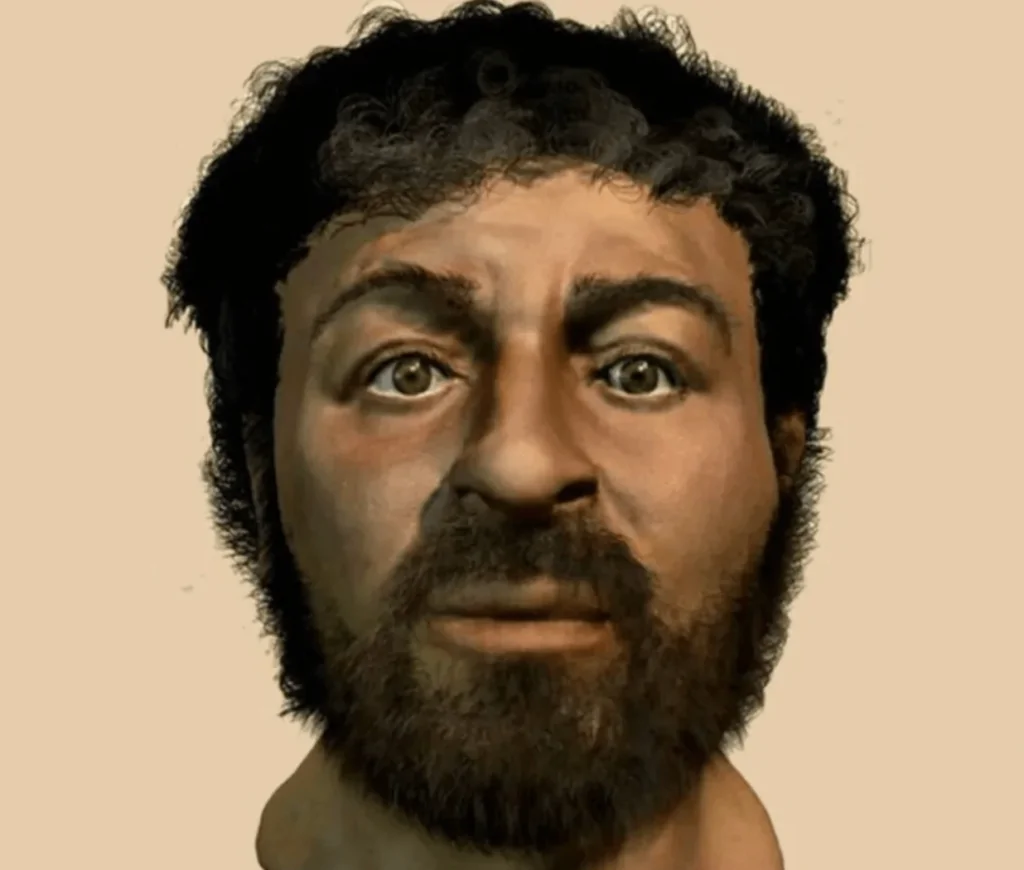Jesus Christ has long been pictured by the Catholic Church as a white, European-looking man with stunning blue eyes. But according to scholars, the actual face of Jesus is very different from the imaginative concoctions of Renaissance painters.
According to them, the Son of God had the physique of a typical male from the ancient borders of Palestine: shorter in stature, muscular, and with coiling black hair as ornament.
Dutch photographer and digital artist Bas Uterwijk visited a new location in search of the solution to the age-old query regarding Jesus’ appearance.

Bas embarked on a mission to portray Jesus in a way that was as accurate to the historical context of his birthplace as possible, armed with cutting-edge technology. Using the potent machine-learning methods developed by Artbreeder, he set out to recreate the Messiah’s appearance.
Unsurprisingly, the representation that Bas came up with is different from how we typically imagine Jesus’ expression.
Bas continues, “The AI software makes use of a neural network that has been trained on numerous photographic portraits and painted representations of human faces. “.
By combining various facial references, users of this clever application can produce a synthesized image that takes their aesthetic preferences into account. Bas used this talent to give life to both real and imagined characters.
According to Bas, “I intended to refine the ethnicity, fashioning a Middle-Eastern visage that resonates with authenticity, drawing on a tapestry of artistic representations of Jesus of Nazareth grounded in Byzantine and Renaissance traditions, including Leonardo da Vinci’s “Salvator Mundi” and the mysterious Turin Shroud.”.
Bas was happy with the result as an expression of the collective cultural portrayal, but he wished for more historical accuracy.

In order to reflect the customs of that time and place, I painstakingly changed the hair and beard lengths and styles. He continues, “I pushed Renaissance aesthetics to the periphery by incorporating elements from Fayum mummy portraits.
Bas’ efforts have produced results that resemble an aesthetic interpretation of what Jesus might have looked like rather than a strict pursuit of scientific exactitude.
Jesus was born into a Jewish family in Bethlehem in 4 BC and lived there until he moved to the Israeli town of Nazareth. The Bible is where this tale first appears.
Historical records, according to Joan Taylor, author of “What Did Jesus Look Like,” demonstrate that the inhabitants of Judea and Egypt had olive-toned skin tones, ebony-black hair, and brown eyes.
Everyone has an idea of what Jesus looked like in their mind. All cultures have representations of Jesus, leading to his universal recognition. Due to this phenomenon, identification has become almost automatic, negating the need for additional research in many cases.
However, Taylor notes that the defining characteristics of Jesus—his flowing hair, robes, and beard—do not exist until the 4th or 5th centuries. In reality, Jesus’ appearance was very different from how it was portrayed.
He had dark skin, and Europe was not his native continent. He was a byproduct of his era and was deeply ingrained in his physical and intellectual environment. “.
His hair would have been short and raven-black, as long hair was uncommon in the first century, Joan Taylor continues. “.

Sandals would have been worn on his feet, and he would have had a beard on his face. “Taylor, a specialist in the history of Christianity, emphasizes that Jesus led a nomadic life and had no fixed address. He shared in the struggle of the less fortunate and depended on the kindness of others.
History supports this portrayal of Jesus as a humble character who was scruffy, like a wanderer with an unkempt appearance, similar to a beggar, as evidenced by historical records like those of the 2nd Century scholar Celsus.
Foxes have homes, birds have nests, but the Son of Man has a place to lay his head, as Jesus once said. This lines up with the most important justification for Jesus’ existence.
Surprisingly, Jesus had an impact on people in Europe and Africa in addition to those in his immediate neighborhood. A forensic facial reconstruction expert named Richard Neave was tasked with creating the likeness of a Judean man who looked like Jesus in the first century.
Neave’s painstaking restoration shows a stocky man with olive skin, dusky hair, and short hair.
We implore you to SHARE this post on Facebook with your friends and family in order to spark meaningful discussions about the complex historical nuances of the beloved icon, as this project sheds new light on the many facets of Jesus’ appearance.

